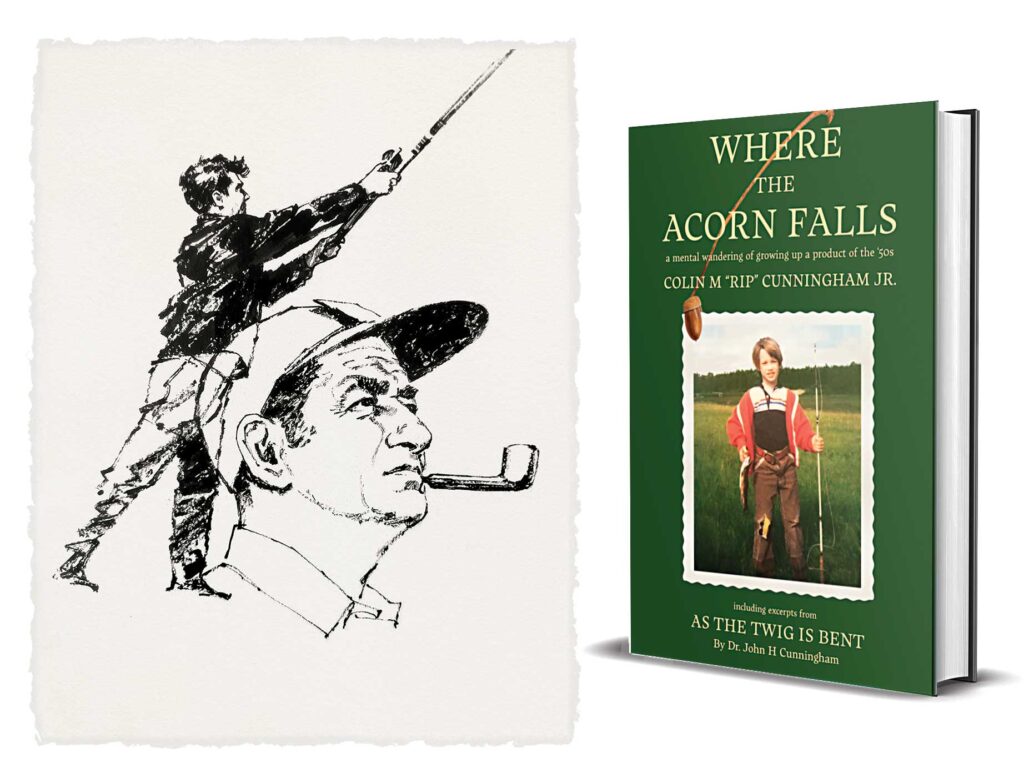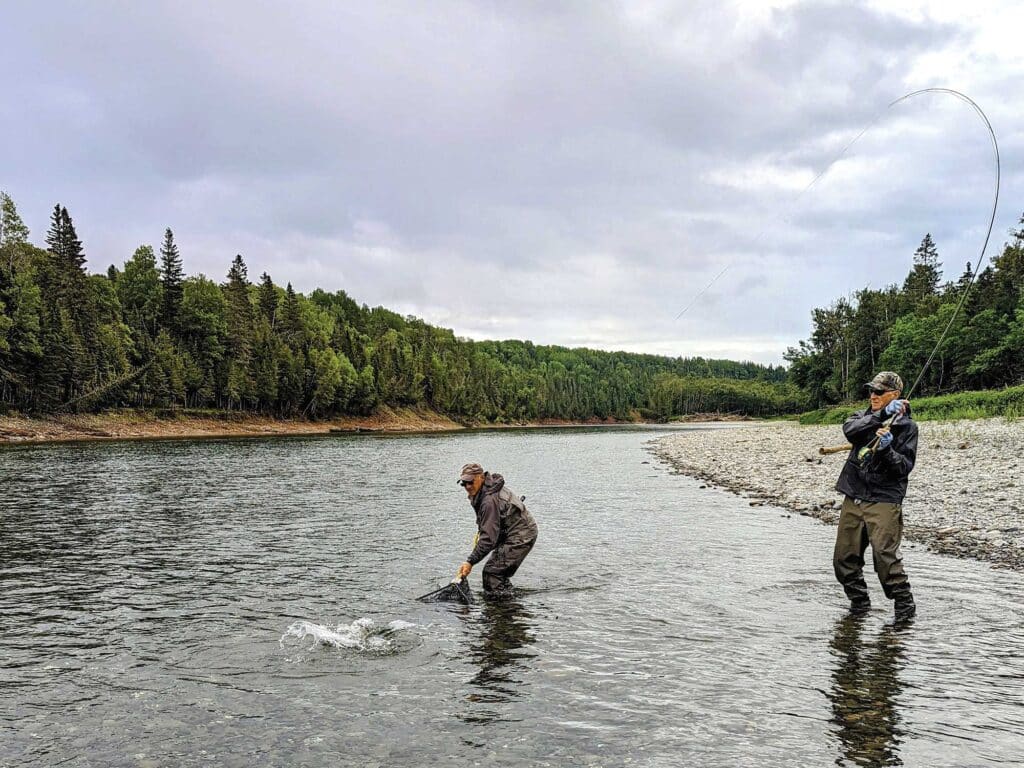
Editor’s Note: Colin M. “Rip” Cunningham Jr. ranks as a true living legend in the saltwater angling community, sport-fishing journalism in particular. Joining Salt Water Sportsman in 1973, he served as a guiding editorial force in building this title into a national success that thrives today, 85 years after its founding. This issue marks Rip’s retirement from 17 years of penning Salt Water Sportsman’s Conservation column, and so the magazine crew decided on a proper send-off by excerpting a portion from his new book, Where the Acorn Falls. It is subtitled: “A mental wandering of growing up a product of the ’50s.” The excerpt chronicles Rip’s pioneering days with the magazine.
On a personal note, I imagine that Rip scarcely remembers the first story I submitted to him in 1976. I had fallen under the spell of the magazine at an early age and held a dream to someday write for Salt Water Sportsman. In my first clumsy attempt, I poured my heart into a rambling narrative about experiences fishing along the shores of Mexico’s Sea of Cortez. Rip rejected it, but he softened the blow with a personal letter that explained why the story didn’t work and how to fix it. “It might contain good information, but readers have to dig too hard to find it,” he observed. “Spell out that information more succinctly, and we’ll take another look.”
I took his advice to heart, and a year later my first story appeared in the pages of this magazine. I never received another story rejection from this magazine or any other. To quote from Rip’s book: “There is a difference between growing up and growing older.” His letter helped me grow up, and for that I am forever grateful. I feel proud to help continue his work at the magazine today and bring you this wonderful excerpt. Enjoy the read. —Jim Hendricks
Excerpted from Where the Acorn Falls
Early in the summer of 1973, I had lunch with my Old Farm Road friend Spider Andresen. Spider was working at Salt Water Sportsman magazine and having some fun earning a living in the sport-fishing world. I complained about the problems that I constantly had to deal with. About two weeks later, Spider called me up and said that Kib Bramhall, the advertising director, had decided to retire and that he would be taking Kib’s job. There would be an opening in the editorial department. Was I interested? Interested, yes, but I needed some time to commit. After thinking about it and discussing the move with my wife, North, I decided that I could always go back to real estate. This would be a once-in-a-lifetime opportunity. I interviewed, got the job, and never looked back. The fact that I had written some articles for the magazine while in graduate school didn’t hurt, but the biggest plus was my knowledge of fishing.
How well I will always remember my first day. I was sitting at my desk in an area outside the publisher’s office, where the senior editor sat when he came to the city….
He was an early adopter of remote work at home. Frank Woolner was a very interesting
character. He almost always wore a military-style beret to the city. He constantly had a pipe clenched between his teeth and was a man of relatively few spoken words. He could write like nobody’s business, but he never graduated from high school. He was a New England champion bicycle racer and a World War II military war correspondent, and he would finish almost any poem you could start from memory. He was well-read and remembered just about everything he read.
Learning the ins and outs of publishing a monthly magazine was fun. In those early days, it was also very labor-intensive. Much was done by hand, and everything had to fit just right. Sometimes, it required a number of tries to make it work. But we usually got it done. We had no computers. We used typewriters. Articles had to be read, edited and sent out for print-setting. Each article had to be designed with selected photos, titles crafted and type-set. All that was pasted into place with the advertising and had to fit into numbers of pages, which had to be divisible by 4. That was when the magazine was only black and white.
Shortly, we added color for articles and advertisements. This meant we had to get all the different page forms correct. There were any number of times where we had to build, then take apart and build again into the middle of the night because we were on a deadline. In those early days, so much was manual that my guess is close to two dozen people would touch the product before it went to the printer. When I finally left the company, computers had taken over, and the whole process was done by two people. In my final days, we proofed everything on a screen and never had a physical product until the magazine was done. Our printers told us about the process changing around the time we bought the magazine. I thought they were crazy. I was oh so wrong!

Just a few months after I went to work, Frank Woolner was diagnosed with colon cancer. He had surgery and a long recovery. If one had known Frank well, it was obvious that he never really recovered mentally. He completely stopped coming to the office. So, there I was, the new guy on the block, and the entire editing and layout process was in my hands. I wanted that first magazine to be perfect. Unfortunately, it was not. When the magazine came out and was delivered to Frank’s house, I got a call. “What the hell is ‘stategy?’” One article about West Coast salmon fishing was titled “Salmon Strategy.” The “r” was left out at type-setting. I should have caught it, but I read right by it. My bad, for sure.
Spider and I were pretty much on our own to position the content of the magazine and to sell the advertising. We both felt that the future was fishing from boats, and over time we phased out all the shore-based fishing articles. While it made some folks unhappy, it was the correct decision. Most of the readers were going into boat fishing, and that was where the biggest percentage of the advertising funds were being spent.
In 1980, we purchased the magazine from Hal Lyman. It was a bigger task than we had anticipated. Within the first month, the printing company that had historically allowed Hal to be three months in arrears on the printing bill came to us with its hand out. It wanted us current, and our monthly bill ran in the hundreds of thousands of dollars. I made the gesture of handing the printers the keys and said, “It’s all yours, good luck.” They quickly changed their tune to, “Let’s figure something out.” We did, and within a year we were current and never in arrears again.
By chance, we made a darn-good team. Spider was the salesman’s salesman. He could sell ice to the Eskimos, and they would be happy to buy it. I oversaw the editorial product and took care of the business issues. We also were lucky enough to have been in a boom time for fishing and boating. We built the publication into a first-class product on a foundation of good information from the best in the saltwater fishing world. Our audience was dedicated and so was our staff. We always tried to hire fishermen first. We could teach the editing and writing process, but the subject knowledge was priceless. Within a few years, we had built the largest saltwater fishing publication in the world. It was as much fun as you can have while working, but it required a lot of time. In a fairly short time, I became a multimillion-miler on Delta Air Lines. We traveled to shows around the country. We traveled to see major advertisers. We traveled to learn new fishing areas and entertain important advertising clients. What a fun time!
Where the Acorn Falls is available on amazon.com in paperback ($16.99) and on Kindle ($6.99).









